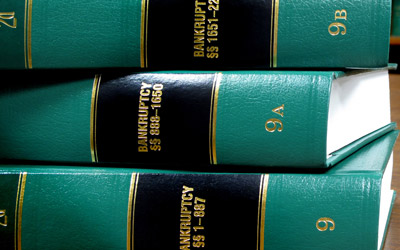Bankruptcy Articles
Chapter 7 Process Versus Bankruptcy Chapter 13 Process
In some ways the process in a chapter 7 and chapter 13 are the same, but in many ways they are different. In both types of cases you must file a petition and related documents prepared with the help of an attorney. In both you attend a 341 meeting of creditors where you are examined by a Trustee regarding the petition and related documents. That is where the similarities end.
In a chapter 7 bankruptcy you do not make payments to the Trustee. You may continue to pay a mortgage or car loan and keep the house or car by signing a “reaffirmation agreement” which makes it as though you did not file bankruptcy on that particular loan. Chapter 7 also gives you an option to redeem a vehicle, by paying the secured creditor the value of the collateral in exchange for a release by the creditor of their lien. The chapter 7 process is relatively a short one, and it lasts approximately 3.5 months from the filing of the case to receiving a discharge. There are usually no motions filed by anyone in a chapter 7 case. Nevertheless, the bankruptcy process is very complicated, and there are many pitfalls for the unwary debtor. Therefore it is imperative that you hire an experienced attorney. If you have low income but you have massive unsecured credit card or medical debt, then a chapter 7 may be right for you.
Meanwhile, in a chapter 13 bankruptcy you are required make payments to the Trustee. Your first payment must be made within 30 days after your case is filed. Also, in addition to the petition and the related documents, you must also file repayment plan. The plan must propose that you repay a portion of your debts by making 36‑60 monthly payments to the Trustee. After the 341 meeting of creditors, there is another hearing called a “confirmation hearing” wherein your case goes before the Judge. You do not have to attend the confirmation hearing, but your attorney will be there to represent you. Your creditors can file objection(s) to confirmation if they have a problem with the proposed chapter 13 repayment Plan. Your case will be confirmed by the Judge at the confirmation hearing if you are current with your chapter 13 payments to the Trustee, any amendments requested by the Trustee have been filed, and any objections filed by your creditors have been resolved. After that, all you have to do is make all your monthly payments under the confirmed chapter 13 repayment and you will receive your discharge. There are usually many motions filed by creditors, the Trustee, and by your attorney on your behalf, during a chapter 13 case. Chapter 13 is even more complicated than chapter 7, so do not attempt to file one without an experienced attorney.






